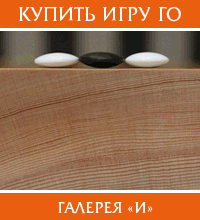This is the site of Perm department of Go Federation.
At the left side you can see a lot of links leading to the top Russian sites dedicated to the game of Go.
We are glad to invite you come into our Go images gallery. If you have any questions to discuss, please visit our International Go Weiqi Baduk Forum.
If you’d like to ask more about Go game, Weiqi and Baduk in Russia, please write: go(#)weiqi.ru.
During the early middle ages, the region of Perm was populated by pagan Finno-Ugric tribes who lived to the southeast of the legendary Bjarmaland and northeast of Volga Bulgaria. Between the 13th and 14th centuries, Russian fur traders and Christian missionaries from Novgorod and later Moscow founded first settlements in the area. In the 15th century, the Perm region, because of its highly profitable fur trade, was object of bitter rivalry between Novgorod and Moscow and in 1472 Perm was finally annexed by Muscovy. In the late 15th and early 16th centuries, soldiers, merchants, Christian monks, and priests were followed by Tsarist administration and peasant settlers from the western Russia. Perm was first mentioned as a village Yegoshikha in 1647; however, the history of the modern city of Perm starts with the development of the Ural region by Peter I of Russia. Vasily Tatishchev appointed by the Russian Tsar as a chief manager of Ural factories founded Perm together with another major center of the Ural region Yekaterinburg. Perm was founded on May 17, 1723, and has had town status since 1781. By 1797 it was already an administrative center of gubernia with the same name.
In the 19th century Perm became a major trade and industry center with a population of more than 20,000 people in the 1860s and several metallurgy, paper and steamboat producing factories including one owned by a British entrepreneur. In 1870 opera theatre was open in the city and in 1871 the first phosphoric factory in Russia was built in Perm. In 1916 Perm State University was open — a major educational institution in modern Russia. After the outbreak of the Russian Civil War Perm became a prime target for both sides because of its military munitions factories. In December of 1918 Siberian White Army of admiral Aleksandr Kolchak took Perm but few months later it was captured by the Red Army. Grand Duke Mikail Alexandrovich was executed in the outskirts of Perm with his secretary Nicholas Johnson on June 12, 1918 on the orders of the Perm Cheka. Their bodies were never recovered. Few weeks later on July 7, 1918 Andronic Nikolsky Archbishop Of Perm was also murdered by the Bolsheviks in the city. In 2000 the Russian Orthodox Church glorified him as Hieromartyr Andronik, Archbishop Of Perm, one of the Russian New Martyrs and Confessors.
In the 1930s, Perm grew as a major industrial city and aviation, shipbuilding and chemical factories were built there. The process continued after the 1940s and virtually every major industry became represented by numerous factories of Perm. To this day almost 80 % of the city’s population employed in manufacturing. During the Great Patriotic War Perm was a vital center of tank production in the Soviet Union.
From 1940 until 1957 the city was named Molotov (Мо?лотов), after Vyacheslav Molotov.
Among famous people born in Perm are ballet impresario Sergei Diaghilev, opera soprano Tatiana Borodina, astronomer Nikolai Moiseev and chess Grandmaster Alexandra Kosteniuk.
The city is a major administrative, industrial, scientific, and cultural center. The leading industries include machinery, defence, oil production (about 3% of Russian output), oil refining, chemical and petrochemical, timber and wood processing and the food industry. Perm is a home to several major universities including Perm State University, Perm State Technical University and Medical Academy.
Perm is the sister city of:
Louisville, Kentucky, United States
Oxford, United Kingdom

